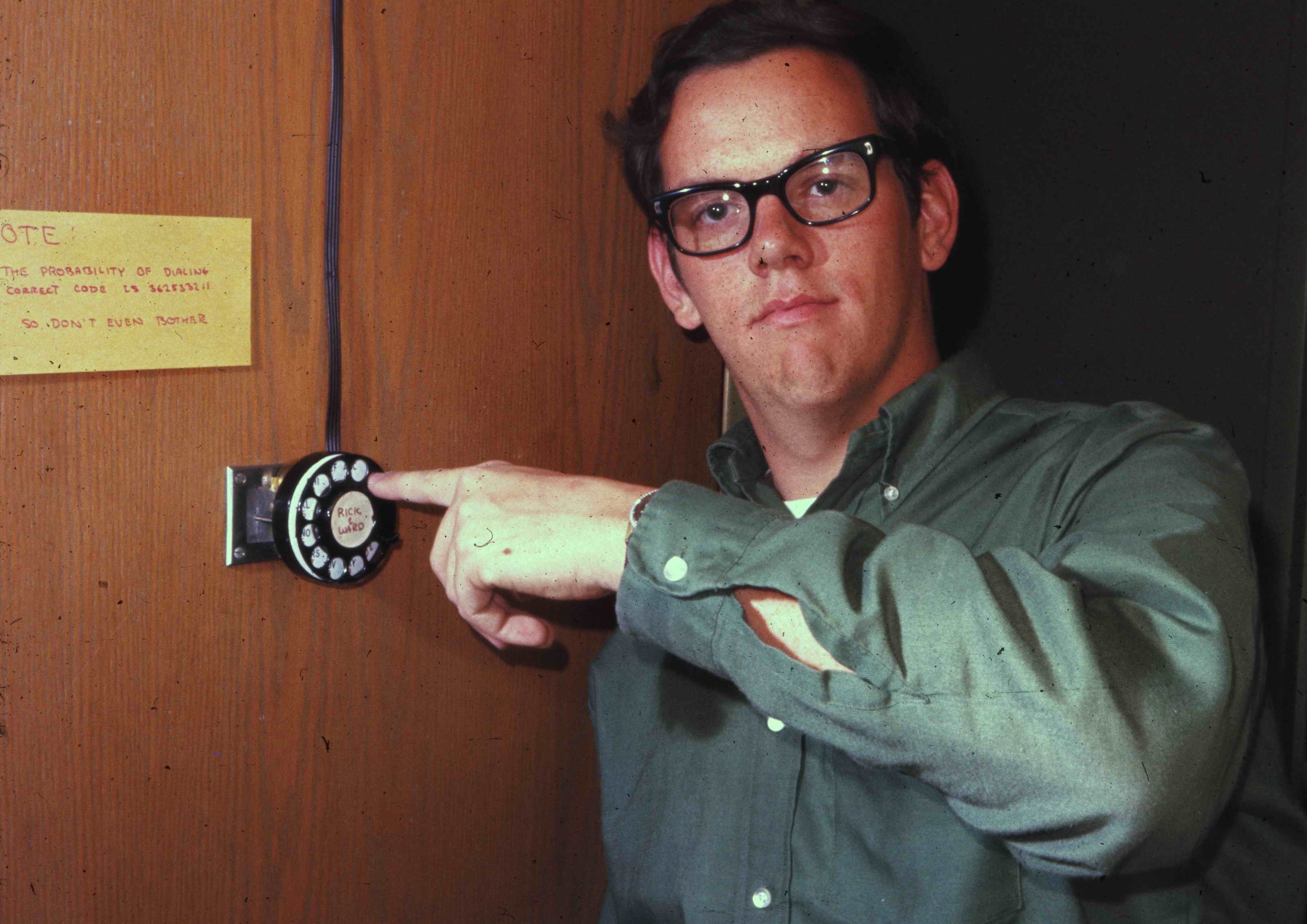It must have been 1968 or so. Roommate Rick Wartzok and I had better than average audio/visual and beverage capability in our Owen Hall dorm room. We shared happily with fellow residents who sometimes came and went without us. But what about keys? We wanted some kind of combination lock that had a shared code that could be selectively enabled, and a longer, master code for our private use. Our solution was Dial-a-Door.
website ![]()

Turn ahead to 2008, forty years later, when our old dorm room neighbor Chuck Stewart comes across these slides and is kind enough to scan them for us. My contemporaries are most impressed with the glasses we wore back then. But I'm thinking about the door, the lock, and the decoding mechanism.
# Modeling
The brains of the system was a decoding device called a SECODER. It's mechanical behavior delights. I built a model of the device from memory before I located the real thing. See Secoder Model
The model is animated with Quartz Composer which can be viewed with Apple's Safari browser. download ![]()
The closeup photo is animated with javaScript which should be compatible with any modern browser. page ![]()
# Resotoration
I found the SECODER in a junk box in my basement. My mechanically and electrically inclined friends have pitched in to help me get the device ready for display.
Wayne Downer tweaked the mechanical components that had been bent or otherwise abused over the years in the bottom of the junk box. We hooked it up with the original dial and fed it serious power from a deep cycle battery. It worked, sorta. Another hour or two of fiddling got it working 90% of the time.
John Providenza helped me diagnose the lamp switching. Surface corrosion was introducing megaohms of resistance in the ground circuit. More fiddling got this down to below a 100 ohms. Let there be light.
YOUTUBE xCc4F2ulBYc Published on Oct 30, 2008.
I built a stand for the assembly out of foam-core board and included a Radio Shack 12-volt indicator lamp to be lit when a number decodes successfully. Amber Case shot the video at a Dorkbot meeting.